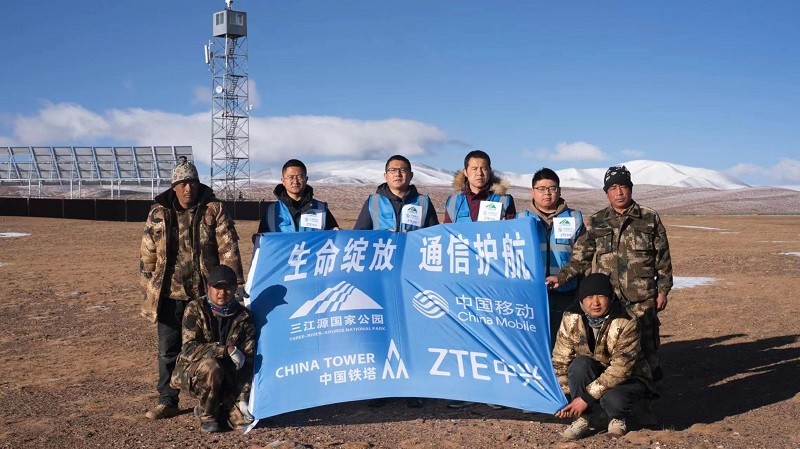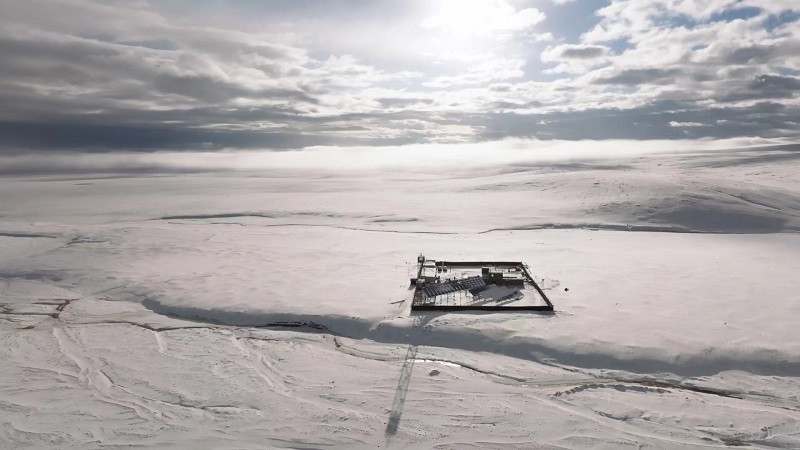Digital Lifeline: Guarding the Highland Biodiversity
Kekexili uninhabited area, known as both "human no-go zone" and "wildlife paradise," stands as China's largest, highest-altitude, and most biodiverse natural reserve. Zhuonai Lake, located in the heart of Kekexili, is renowned as the "Tibetan antelope maternity ward". Every year from May to July, tens of thousands of female Tibetan antelopes undertake long migrations to give birth in the vicinity of Zhuonai Lake.
However, guarding these highland spirits on the secluded wilderness previously demanded treacherous patrols across challenging terrains, facing low efficiency and high risks. Communication service was hindered by satellite limitations, and the guardians endured harsh conditions, often isolated and unsupported.
Digital Intelligence Protects Highland Ecosystem
Driven by a commitment to ecological protection through digital intelligence, ZTE, in collaboration with Qinghai Mobile and other partners, has developed an advanced communication solution that integrates high-capacity microwave technology, base stations, and long-distance coverage. In early May of 2023, they successfully deployed the first 5G base station at Zhuonai Lake Protection Station. Despite the challenges posed by the harsh environment—high altitude, extreme cold, strong winds, and permafrost—ZTE and China Mobile overcame obstacles such as hypoxia, altitude sickness, and wildlife disturbances. After over twenty days of dedicated effort, the project was completed with exceptional efficiency, marking the first video call within this vast uninhabited area.

The deployed 5G base station at Zhuonai Lake utilizes two frequency bands to achieve a balance between coverage and capacity. The 700MHz band, combined with 5G ultra-long-range coverage technology, covers a radius of over 10 kilometers, with a single base station covering the entire Zhuonai Lake region. Additionally, the 2.6GHz band enables support for 32 high-definition video uploads, meeting the high bandwidth requirements for HD video backhaul around the protection station.
The base station transmission utilizes wide bandwidth and long-distance microwave relay, allowing for a single hop span of over 57 kilometers. Furthermore, all equipment at the site is powered by solar energy, designed to withstand 11-level winds, and engineered to endure temperatures as low as -50°C.

According to Hu Bo, General Manager of China Mobile, the protection work in Kekexili poses significant challenge. Extending China's 5G network coverage to uninhabited areas to support environmental protection and enhance the integrated management of protected areas has long been a goal for China Mobile. Currently, the maximum internet transmission speed around the protection station is 860Mbps. High-quality 5G networks bring numerous benefits. They enable real-time observation of Tibetan antelope births, ensuring crucial wildlife monitoring. Additionally, they prevent protection staff from being isolated in harsh environments, promoting their safety and well-being. Moreover, 5G technology opens up possibilities for future environmental protection, ecological monitoring, scientific expeditions, and changes in the management of protected areas.
The Timeless Beauty of Kekexili Endures
As a showcase of Qinghai's natural beauty, the ecological monitoring network system has become a pivotal platform for new media education, featured prominently at expos and Qinghai-related events. The world's first live 5G broadcast of Tibetan antelope calving in this uninhabited area has allowed global audiences to witness the "Tibetan Antelope Maternity Ward," amplifying Kekexili's story across various media channels worldwide.
Moving forward, 5G+ drone monitoring, 5G+ VR, soil and water quality analysis and other cutting-edge technologies are expected to be implemented here, allowing the world to connect with Kekexili's natural beauty like never before.
